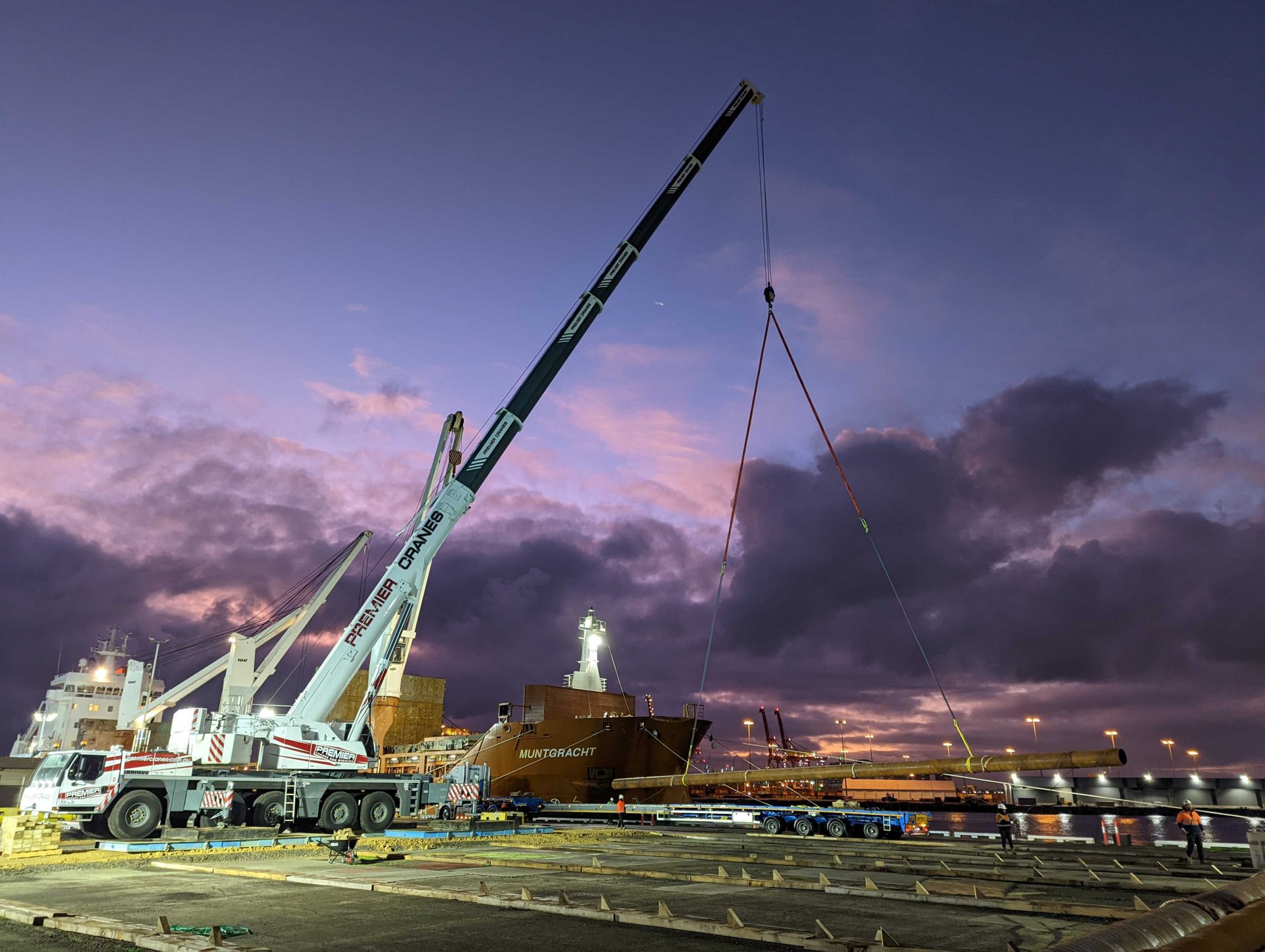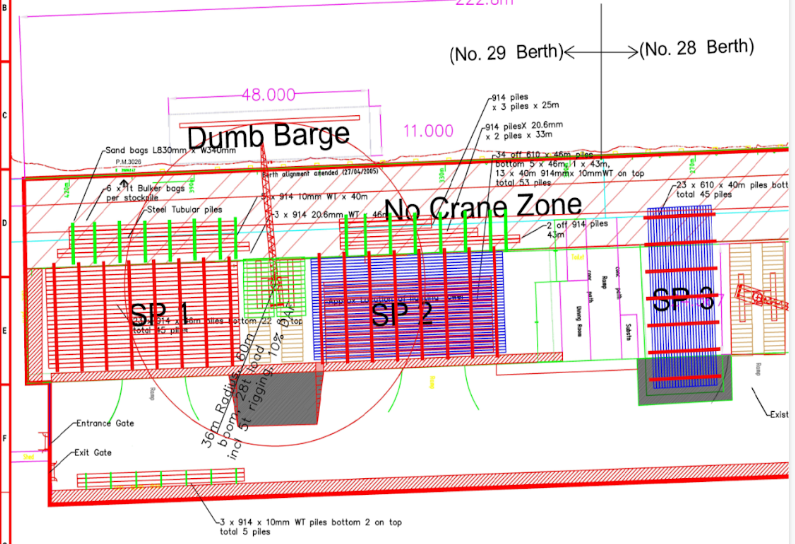
Project Summary
Client: CH Robinson
Location: South Wharf Berth 28 and Berth 29; Appleton Dock
Crane: LTM1250-5.1; LTM1350-6.1 and 25t Franna
Project Overview

PROJECT OVERVIEW: The scope of works involved the port’s stevedores unloading the piles from the vessel onto a Laydown Area or on to Premier’s semi trailer, which then moved them 350m towards the required second laydown area in a triple extendable trailer. Finally, Premier’s cranes unloaded the piles in the second laydown area. The project complexity required strong and timely coordination between Premier’s crews and the client to complete the works within time and on budget.
CHALLENGE: Given the completion timeframe for this job and the delayed vessel arrival, the Premier day and night field crews worked hard around the clock to over-deliver on the client’s own KPIs. Some of the main challenges included poor ground condition at the laydown area, securing the piles in the laydown due to the wharf slope, keeping the load under the stored piles low with extensive load bearers laid down, unusually long load shape and inclement weather conditions. More challenges came up when our Team identified discrepancies in the stowage plans where the piles were stored inside the vessel. The incorrect stacking of the piles in stowage plans would have wasted resources on double handling and additional time to lay out the piles in the correct order - How did the Premier team stop this from happening?
SOLUTION: Once the Premier team realised the vessel unloading was not going to happen as planned, we proactively reached out to the Client with a new plan where the trucks moved the piles to the new laydown area and the crane operaters were mobilised accordingly.
The new plan required strong coordination between Premier’s and the Client crews, as well as our Engineers and the Clients Leading hand on a lift by lift basis. This was crucial as the load specifications varied across most piles and each lift required a different execution.
Our team team took ownership over the result by even handling the debrief between the clients field crews to ensure no disruptions to the ongoing operations. In terms of the ground condition, Premier's solution included big bogmats to reduce the Ground Bearing Pressure (GBP) on the laydown area. To ensure load stability, the rigging involved a 20m long spreader bar and extra sets of slings, shackles and other rigging equipment as a backup. Given the unstable weather conditions throughout the project duration, our Team actively monitored wind speeds and notified the client for alternative execution pathways when needed. Leveraging Premier’s network, we were able to organise timbers and sawing in a short period of time amid the current labour and material shortage, these were used for temporary propping the piles to keep them stable. In order to rectify the incorrect stacking and stowage plans that would have otherwise required double handling extra time for laying down piles into the correct location, our resourceful Team changed the laydown procedure and start points. Instead of starting from one corner, the Crews started from the middle of laydown area to avoid double handling, with Engineers providing new temporary drawings for new start point identified to meet McConell Dowell requirements.
